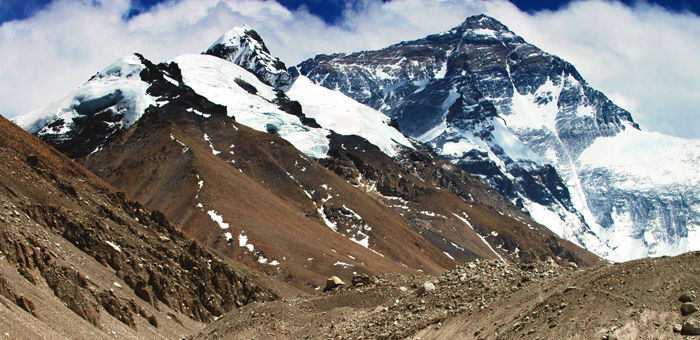Man vs. mountain: heroes in life and in literature
Mount Everest is located in the Himalayas, on the border of Nepal and Tibet. At 29,035 feet above sea level, it’s the tallest peak in the world. (Michael Kodas/Hartford Courant/MCT)
May 13, 2015
April 25 of this year was in the deadliest day in Mt. Everest’s recorded history.
This is the day a disastrous earthquake struck Nepal. Mt. Everest is located about 220 kilometers from the epicenter of the quake, and yet it triggered an avalanche on Mt. Everest that struck base camp and killed at least 19 climbers, wounding over 60 more.
For a long while, the only people who could be the rescue team were the other climbers who escaped the deadly slide.
This is all real life, but I am certain the survivors and the heroes of April 25 will write an incredible novel about it. I am also certain I will read that novel and be enthralled.
Books about real disasters have a unique place in human psychology. We have a natural inclination to this type of story.
You might remember a popular book “Between a Rock and a Hard Place” which became the hit film “127 Hours” following the horror that faced Aron Ralston, a rock climber who had to saw his own arm off when a boulder rolled and trapped him. You might have heard of the book “Alive” which has sold millions of copies and graphically unfolds the real-life experience of the Uruguayan rugby team that crashed in the Andes and had to resort to cannibalism to survive.
You might have heard of “Into Thin Air,” a book about another mountaineering disaster on Mt. Everest that, until May 2014, had the dubious distinction of being the most deadly accident in Mt. Everest’s history.
According to a study from McGill University, psychologists’ call our collective inclination to bad news a negativity bias. We are, as a species, biased towards informing ourselves about the bad things, because we are an optimistic group, and we view the world through rose-colored glasses. We are absorbed in the novelty of negativity.
That could explain why people get pleasure from reading about disaster. I’ll be the first to admit that I love a good survival novel. But its not the only reason. People also like books like this because we know what to expect. According to a study published in the Journal of Motivation, Emotion, and Personality, people find those stories the most exciting once the outcome has already been decided.
A good survival novel requires one thing: Survivors. And so it makes sense that people would be fascinated by the feat of human endurance that made this possible.
“Into Thin Air” is one such book, telling the story of the 1996 Mt. Everest disaster, a massive storm that killed 8 people on Everest, the third most in one day. This tale of survival chronicles how “Outside” journalist John Krakauer came to climb Mt. Everest after initially being asked to report on the mountain’s commercialization, and how he weathered the storm even as both his guides were killed.
Regardless of your interest in mountaineering, this book is incredible. Between beautiful prose and an absorbing story of man versus mountain, the book communicates something bigger than mountain climbing: the incredible resiliency of humanity.
That’s what I love about these books; the realization that amazing things happen in real life as much as they do in fiction. Real heroes do exist. Like on Mt. Everest in 1996, 2014, and last month, people do extraordinary things to help one another survive. The real men and women who risk their very real lives in order to save others in a very real tragedy is a more meaningful story of heroics than any superhero could ever be.





















